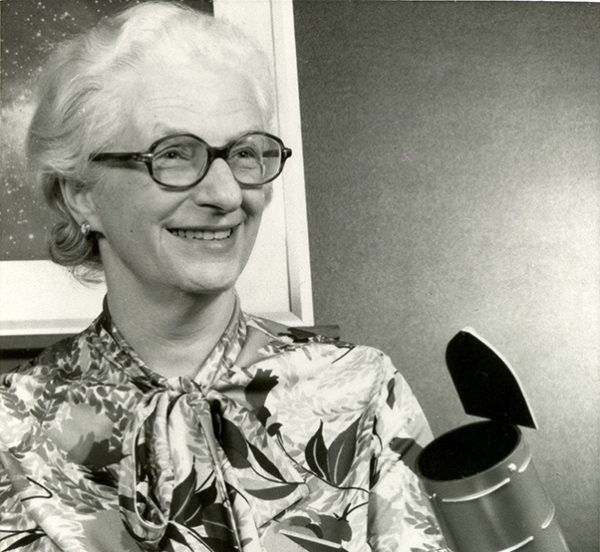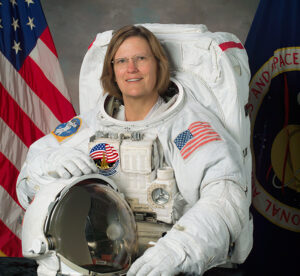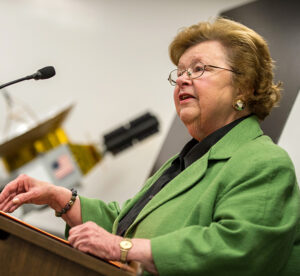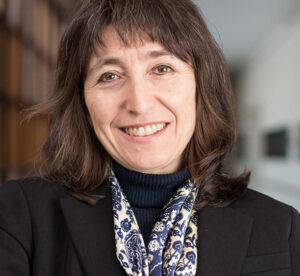Four successful women behind Hubble’s achievements – Aerotech News

They’ve worked in the deadly vacuum of outer space, appropriated millions of dollars for astronomical research, peered across billions of light-years to determine the universe’s age, and convinced the United States Congress to support the boldest astronomy endeavor ever undertaken by humans.
To commemorate Hubble’s 30th anniversary, we present these profiles of four extraordinarily talented and dedicated women who helped realize the Hubble Space Telescope’s success as a scientific game-changer and cultural icon.
These visionaries are the first to be highlighted in a series to be released throughout the year, representing the epitome of our nation’s scientific and technological prowess, as well as the American pioneering spirit.?
Dr. Nancy Grace Roman
Nancy Grace Roman is fondly remembered as the “mother of Hubble.”
Her earliest recollections of astronomy were as a young girl living in Nevada. Her mother would take her out at night and teach her the constellations.
Years later, as a young astronomer, Roman pushed for a telescope to be launched into space to see the universe much more clearly. As NASA’s first chief of astronomy and the first woman in a leadership position at the space agency, Roman lobbied for early funding for Hubble, arguing that, for the price of a movie ticket, each American could be given years of scientific discoveries.
She also worked tirelessly to promote what was then known as the Large Space Telescope to the astronomical community, and coordinated the efforts of astronomers and engineers to develop a major orbiting observatory.
When NASA representatives appeared before Congress to promote the idea of a space telescope, Roman wrote their testimony. Astronomer Lyman Spitzer envisioned a telescope in space in 1946, but Roman spent decades working to make that dream happen. In addition to working on the Hubble project, she also oversaw the planning and development of the Cosmic Background Explorer, which launched in 1989, and confirmed the big bang theory of the universe’s creation. She blazed a trail for women at a time when science was considered an almost exclusively male-dominated profession. She passed away in 2018, at the age of 93.

Astronaut Dr. Kathryn D. Sullivan
In 1984 Kathy Sullivan became the first female American astronaut to walk in space.
When Hubble was launched in 1990, Sullivan was ready to do it again, if needed. She was on board the space shuttle Discovery as a member of its five-person crew. Their mission was to deploy Hubble into Earth orbit to open a new view on the universe. With little warning — but plenty of practice — Sullivan almost made another spacewalk during the deployment mission. One of Hubble’s solar panels was stuck unfolding, and Sullivan was ready to step outside the space shuttle to crank it open. Solar panels provide electricity to the orbiting observatory. Without a last-minute intervention to unfurl the panel, a lack of power would have incapacitated the telescope. Thankfully, a quick-thinking ground-controller disabled a software command that was causing the problem, and her spacewalking rescue skills were not needed.
In 1991, Sullivan received the Haley Space Flight Award for “distinguished performance in the deployment of the Hubble Space Telescope on shuttle mission STS-31 during April 1990.” Sullivan flew on one more shuttle mission in 1992. After spending more than 530 hours in space over three shuttle missions, Sullivan, an oceanographer, left NASA in 1993 to become the chief scientist at the National Oceanic and Atmospheric Administration. She then held a series of other distinguished positions, including deputy and acting administrators of NOAA. In 2004, Sullivan was inducted into the Astronaut Hall of Fame.
“Hubble’s images and results have entered the popular conversation, the popular culture, in a way that I can’t remember any other instrument doing,” Sullivan said in 2019. “That’s just really amazing to me, the degree to which this rich and artistic understanding of our universe has permeated pop culture.”

Sen. Barbara Mikulski
If Nancy Grace Roman was the mother of Hubble, U.S. Senator Barbara A. Mikulski is Hubble’s godmother.
Throughout the Hubble mission, the now retired senator from Maryland was Hubble’s biggest cheerleader and staunchest defender. During her time as senator, from 1987 to 2017, she was a fierce advocate for not only Hubble, but for the development of a next-generation space telescope, now known as the James Webb Space Telescope. In 1994, after the success of the on-orbit repair mission to fix Hubble’s optics, Mikulski proudly declared at a press conference, “The trouble with Hubble is over!” (Roman attended the televised NASA press event, and quietly sat in the audience knitting — mission accomplished!)
When the much needed, last scheduled Hubble servicing mission was canceled in 2004, in the shadow of the deadly space shuttle Columbia disaster, Mikulski helped lead the cause to reinstate the Hubble repair visit. Like any cautious medical patient, Mikulski announced that she needed a “second opinion” for Hubble. The space telescope was far too important to our nation’s scientific wherewithal to abandon. Her relentless efforts led in 2009 to Servicing Mission 4, the final tune-up for Hubble. This greatly extended Hubble’s operational lifetime into the 2020s.
The Space Telescope Science Institute, Hubble’s science operations center, honored Mikulski in 2012 by naming the world’s largest astronomical data archives after her. Called the Barbara A. Mikulski Archive for Space Telescopes, or MAST, the huge database contains astronomical observations from several NASA space astronomy missions, including Hubble. Mikulski received another honor in 2012 when a distant, exploding star observed by Hubble was named Supernova Mikulski. After her retirement from the senate in 2017, Mikulski joined Johns Hopkins University as a professor of public policy and an adviser to the university’s president, Ronald J. Daniels.

Dr. Wendy Freedman
Shortly after the launch of the Hubble Space Telescope, Wendy Freedman became world-renowned for leading a team of 30 astronomers who carried out the Hubble Key Project to measure the current expansion rate of the universe.
This measurement was one of the primary justifications for building a space telescope. The value derived from the measurement, called the Hubble constant (after American astronomer Edwin Hubble, who discovered the expansion of the universe in the 1920s), is a critical anchor point for calibrating the age of the universe, among other fundamental cosmological parameters.
When the Hubble Space Telescope was launched, the measured expansion rate of the universe was uncertain by a whopping factor of two. This meant that the universe could be as young as 9.7 billion years or as old as 19.5 billion years. After years of meticulous observations with Hubble, Freedman’s team determined the age of the universe as 13.7 billion years with an uncertainty of 10%. The analysis was accomplished by precisely measuring the distances to nearby galaxies using a special class of “milepost marker” stars called Cepheid variables. Those observations were made by 2001. Since then Freedman and her colleagues have conducted follow-up observations, along with other teams of astronomers, using Hubble to further shrink the uncertainty in the Hubble constant.
Freedman has had an extraordinarily productive career at the Carnegie Observatories. She received a Carnegie Fellowship at the Observatories in 1984, joined the faculty in 1987 and became director in 2003. Now at the University of Chicago, Freedman is the chairperson of the board of directors of the Giant Magellan Telescope, currently under construction at the Las Campanas Observatory in Chile.





